Ariel (moon)
Videos
Page
Ariel is the fourth-largest moon of Uranus. Ariel orbits and rotates in the equatorial plane of Uranus, which is almost perpendicular to the orbit of Uranus and so has an extreme seasonal cycle.
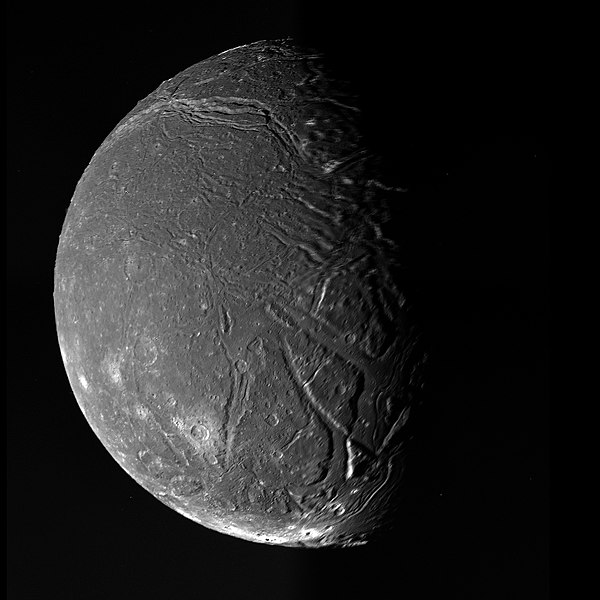
Ariel in greyscale as imaged by Voyager 2 in 1986. Extensive grabens are visible, including the Kachina Chasmata in the upper part of the image.
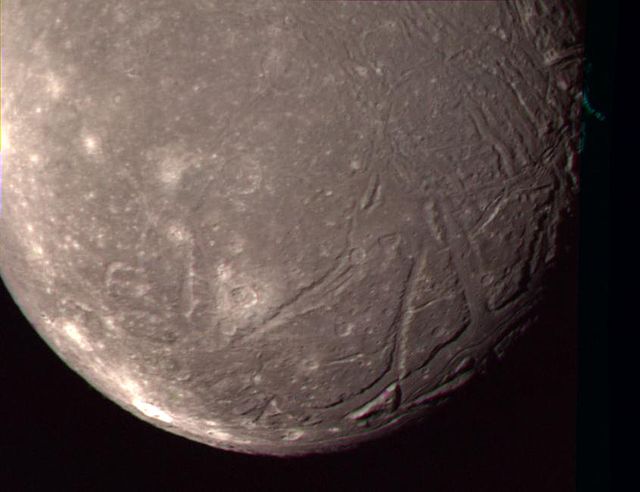
The highest-resolution Voyager 2 color image of Ariel. Canyons with floors covered by smooth plains are visible at lower right. The bright crater Laica is at lower left.
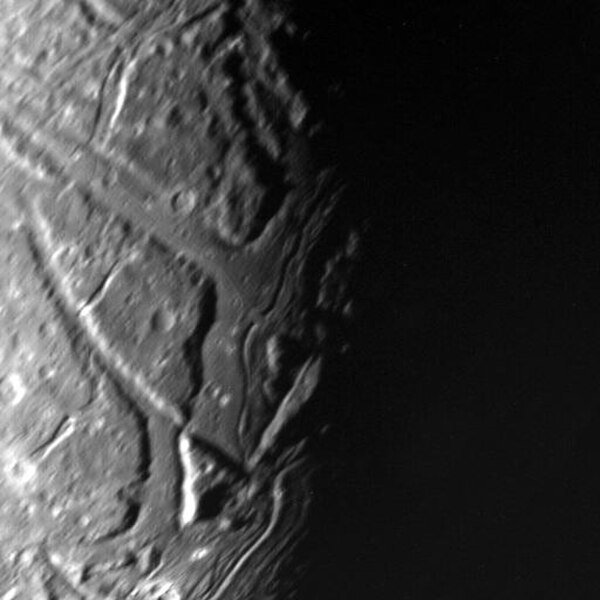
Graben (chasmata) near Ariel's terminator. Their floors are covered by smooth material, possibly extruded from beneath via cryovolcanism. Several are cut by sinuous central grooves, e.g. Sprite and Leprechaun valles above and below the triangular horst near the bottom.
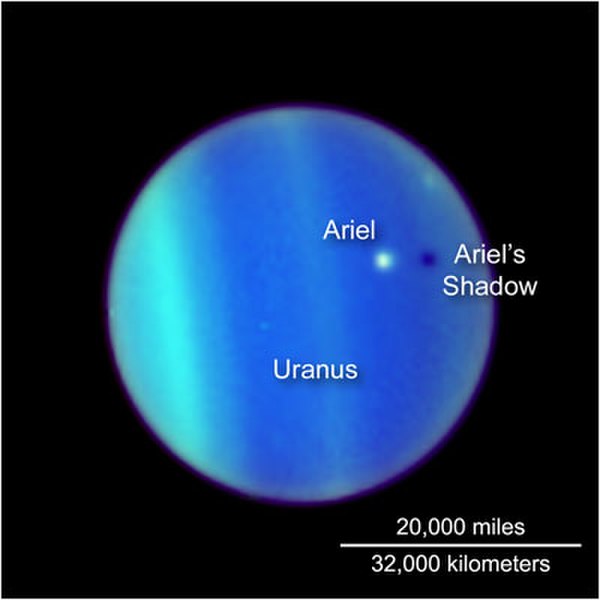
HST image of Ariel transiting Uranus, complete with shadow
Moons of Uranus
Videos
Page
Uranus, the seventh planet of the Solar System, has 28 confirmed moons. Most of them are named after characters that appear in, or are mentioned in, the works of William Shakespeare and Alexander Pope. Uranus's moons are divided into three groups: thirteen inner moons, five major moons, and ten irregular moons. The inner and major moons all have prograde orbits and are cumulatively classified as regular moons. In contrast, the orbits of the irregular moons are distant, highly inclined, and mostly retrograde.

Uranus and its six largest moons compared at their proper relative sizes and in the correct order. From left to right: Puck, Miranda, Ariel, Umbriel, Titania, and Oberon
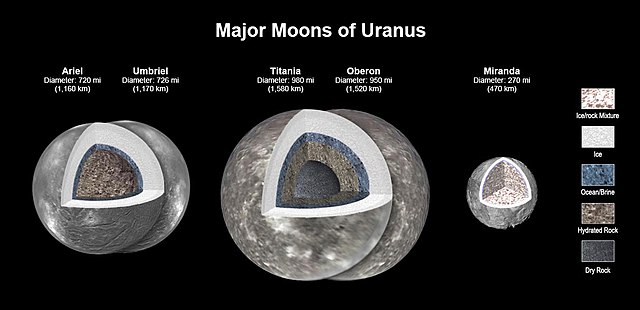
Moons (Ariel, Umbriel, Titania, Oberon, Miranda) Modeling (4 May 2023)
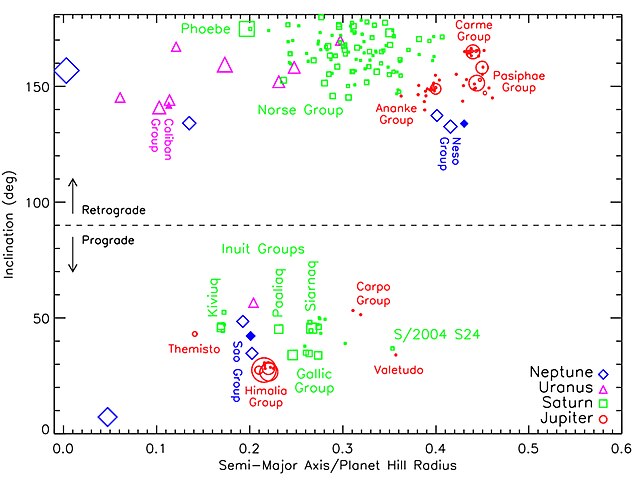
Irregular satellites of Jupiter (red), Saturn (green), Uranus (magenta) and Neptune (blue; including Triton), plotted by distance from their planet (semi-major axis) in the horizontal axis and orbital inclination in the vertical axis. The semi-major axis values are expressed as a fraction of the planet's Hill sphere's radius, while the inclination is expressed in degrees from the ecliptic. The radius of the Uranian Hill sphere is approximately 73 million km.